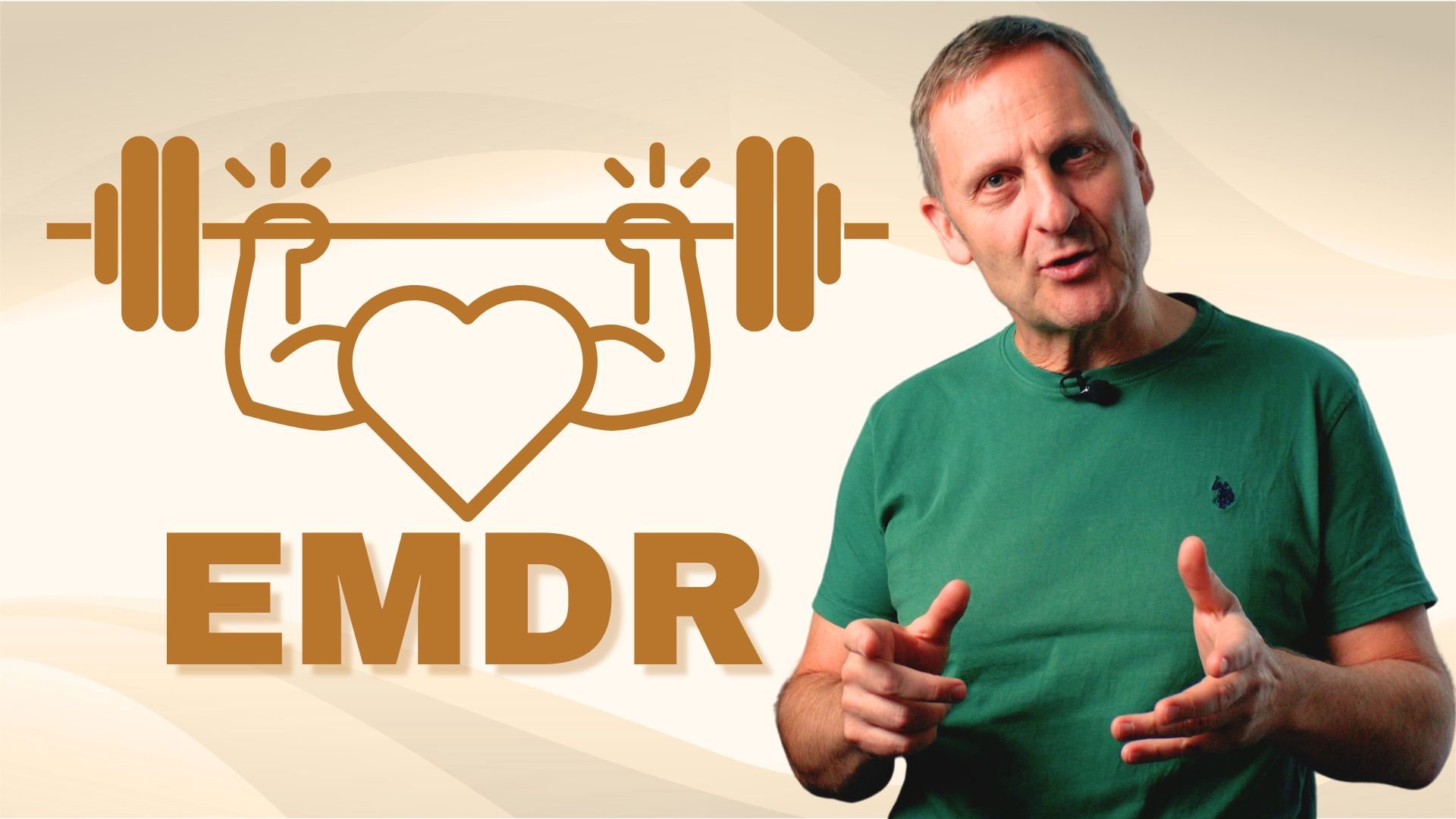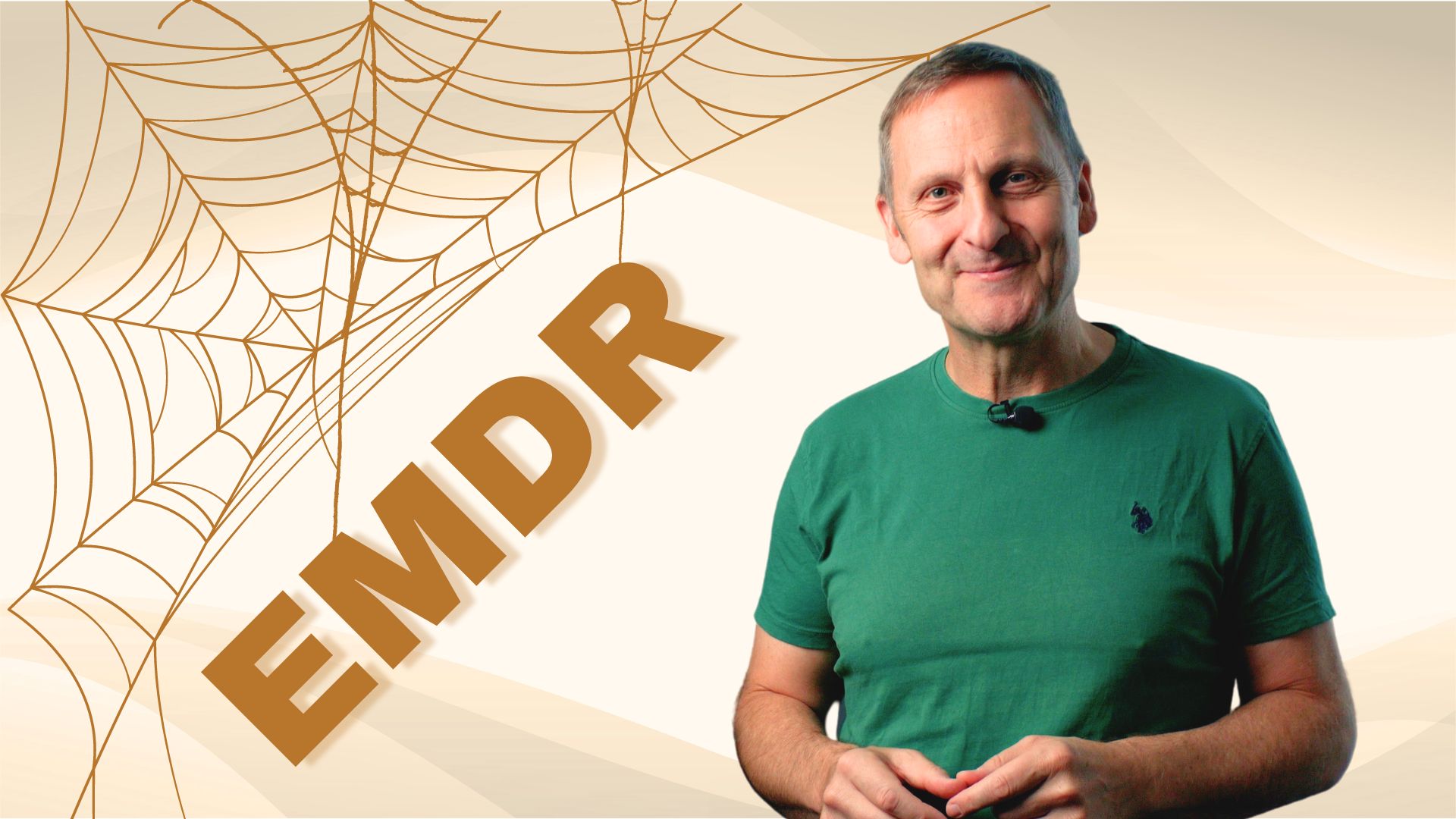Rapid eye movements are the key central element of EMDR.
EMDR (Eye Movement Desensitization and Reprocessing) is a generally extremely effective method, which is used in therapy as well as in coaching. The central key element of the method is the processing of stressful memories through rapid eye movements.
Stimulation by auditory stimuli or by alternate touching of the shoulders or knees is also used. Ultimately, however, visual stimulation, i.e., inducing rapid eye movements in the client*, seems to be probably the most effective type of stimulation. Without the intervention with rapid eye movements, processing would be difficult. Neither auditory stimulation nor “tapping” are similarly effective, as my experience of more than 10 years shows.
But, caution is also needed with visual hemispheric stimulation. This is because incorrect execution of rapid eye movements can reduce or even prevent the expected effects of EMDR.
What should be considered when performing rapid eye movements during an EMDR session?
Time and again, in supervision with coaches and therapists, it becomes apparent that complications in sessions with clients often involve the incorrect execution of rapid eye movements.
So what are the aspects of visual stimulation that need urgent attention?
The following parameters have a decisive influence on the effectiveness of EMDR intervention with rapid eye movements:
- Duration of eye movements: If eye movements are performed for too short a time, the stressful memories cannot be processed or cannot be processed completely. Rather, it may increase the burden on the client. In this case, repetition of the stimulation by rapid eye movements is mandatory to maintain the initiated process and ultimately lead to a satisfactory result: The client’s well-being.
- Speed of eye movements: It is often observed that eye movements are performed much too slowly. Even though the client may have difficulty making rapid eye movements, especially in the beginning, it is still necessary for the eye movements to be fast and fluid. In most cases, the flexibility of eye movement improves after a short time. The speed of eye movements varies from client to client. Thus, each client should choose the highest speed that is still comfortable to them in order to best support the process. If the eye movements are performed too slowly, the processing of the stressful topic can be impeded and the EMDR process comes to a standstill.
- Deflection of the eye movements: The deflection of the eyes refers to the outer marks to which the eyes are guided alternately to the left and right. These external markers vary from client to client. If the deflection is too small, it is also likely to hinder the effective course of the process.
- Frequency or repetition of eye movements: Processing the stressful subject is accompanied by multiple repetitions of eye movement rounds in the same step or phase. Again and again, the client focuses on his subject and notices his emotions and traces his body sensations, then processes again in the process with rapid eye movements. Once the client has finished the rapid eye movements, he should answer the question “what about now?”. Whatever shows up for him, he continues with it and starts working through it again. This cycle of the process is repeated until the client feels little or no strain. Again, if the process is stopped too early, there is a high risk that the client will get stuck in the process.
- Errors, such as head movements, which weaken the movements of the eyes
The above 5 points are obvious sources of error. Incorrect execution can nullify the effects of an EMDR intervention with rapid eye movements. Therefore, in EMDR therapy or coaching, it is up to the therapist or coach to control the visual stimulation with rapid eye movements. To do this, he guides the client by waving in front of his eyes. Usually he waves his hand with two fingers extended in front of the client’s eyes, who should follow with his eyes. In doing so, the therapist or coach chooses a distance that is comfortable for the client.
As a rule, the therapist or coach controls the rapid eye movements
The therapist or coach thus ensures that the rapid eye movements are applied correctly in terms of duration, speed, deflection, but also in terms of repetition. He also makes sure that the client does not move his head. This is because it is almost impossible for the stressed client to perform rapid eye movements correctly without an external stimulus, as observations show.
If it were so easy to perform the rapid eye movements correctly, an externally instructing stimulus could be dispensed with. The request: “Move your eyes now, please!” , would suffice. But this does not work! For even in an unstressed state of mind, it is difficult for prospective EMDR therapists or coaches in EMDR training, for example, to guide the rapid eye movements correctly. It is almost impossible for the client to control the correct execution of his eye movements himself in his emotionally stressed situation.
Hardly any client would do the eye movements correctly. Consequently, countless clients would be disappointed and in the firm belief that EMDR does not work.
In self-coaching with EMDR, an external stimulus is mandatory
Especially when self-coaching with EMDR, it is important for the self-user to ensure that he or she is executing his or her rapid eye movements correctly in order to bring about the desired effects. To make matters worse, in self-coaching there is no coach available to point out mistakes.
In developing the EMDR self-coaching method, it quickly became clear that visual stimulation must be controlled by an external stimulus in order to avoid errors. In self-coaching, the self-user goes through the 6 steps of EMDR self-coaching alone. He also performs the eye movements according to the instructions at the decisive moment.
There is no question that at this moment the rapid eye movements must be performed correctly and repeatedly: i.e. quickly, fluently, with sufficient deflection and duration. Without external stimulus, the stressed self-user would have to guide his eyes to move by himself; and over a fairly long period of time with frequent repetitions. At the same time, however, he should perceive his inner changes concerning his subject, his emotions and his bodily sensations.
EMDR goggles REMSTIM 3000
more]
(*I ask for your understanding that for the sake of simplicity I only use the masculine form. Of course I also refer to any female client, therapist, coach or self-user).












